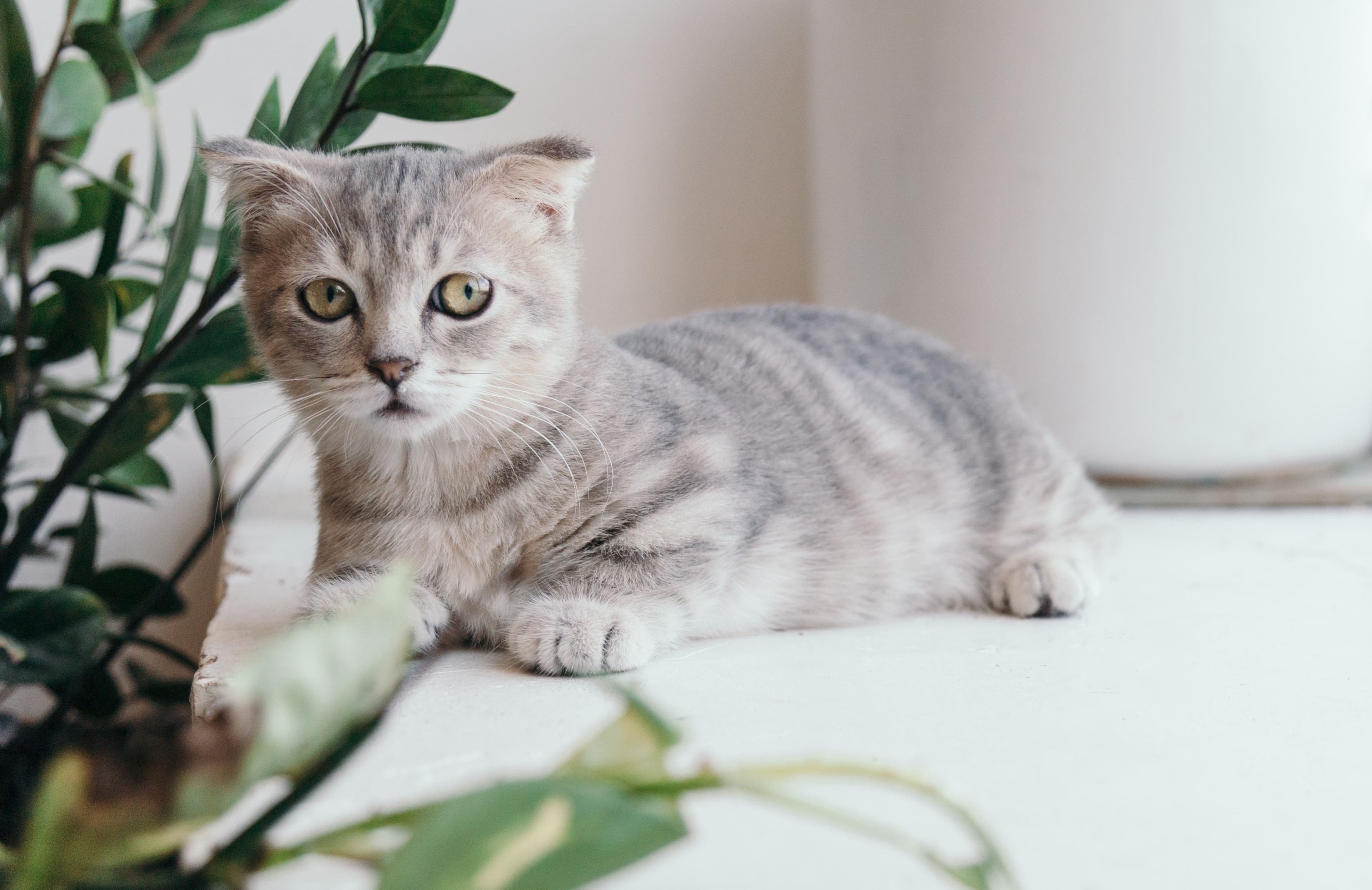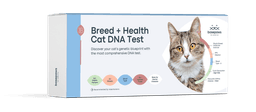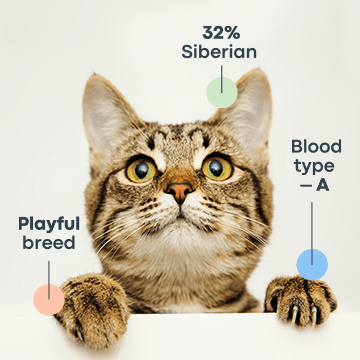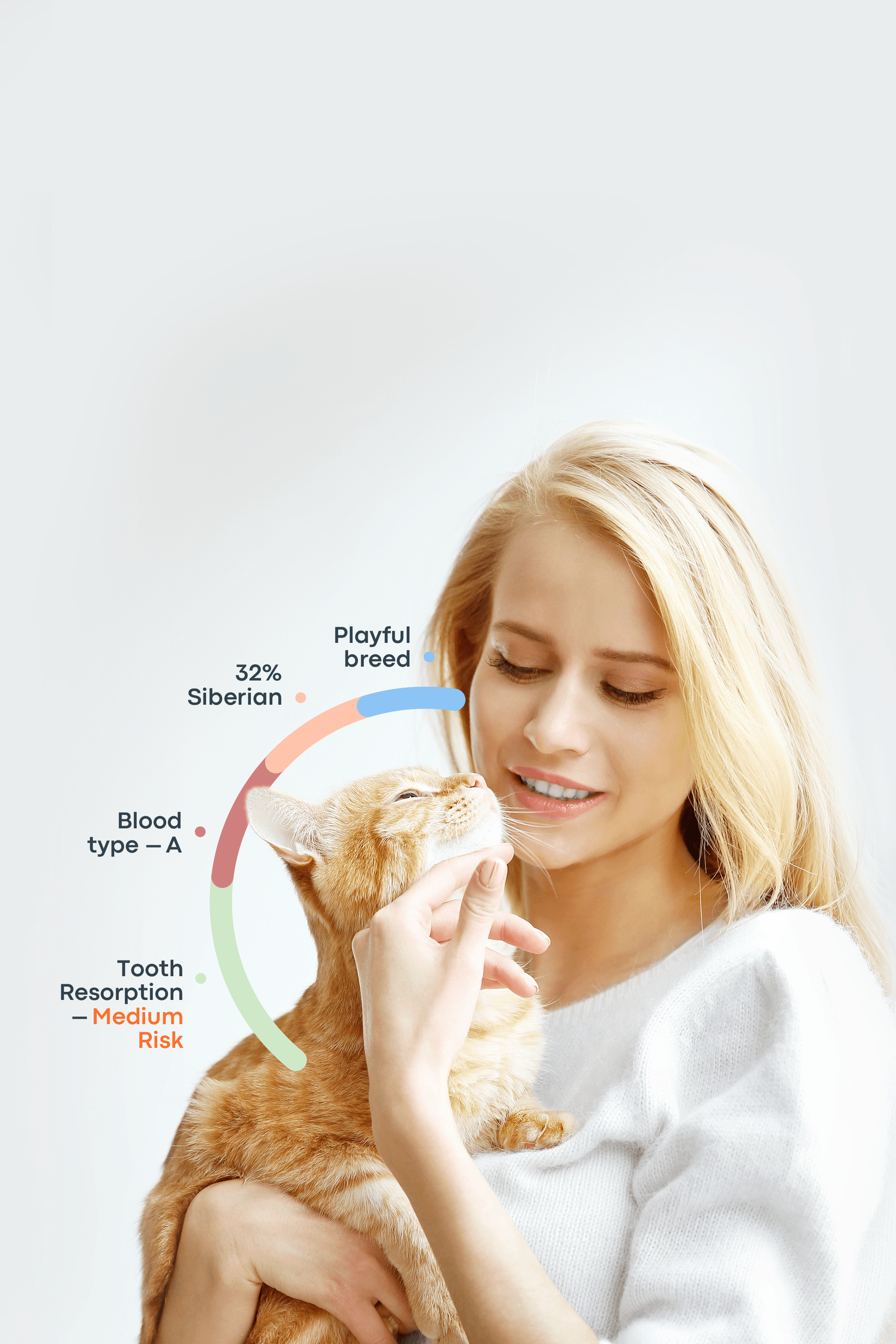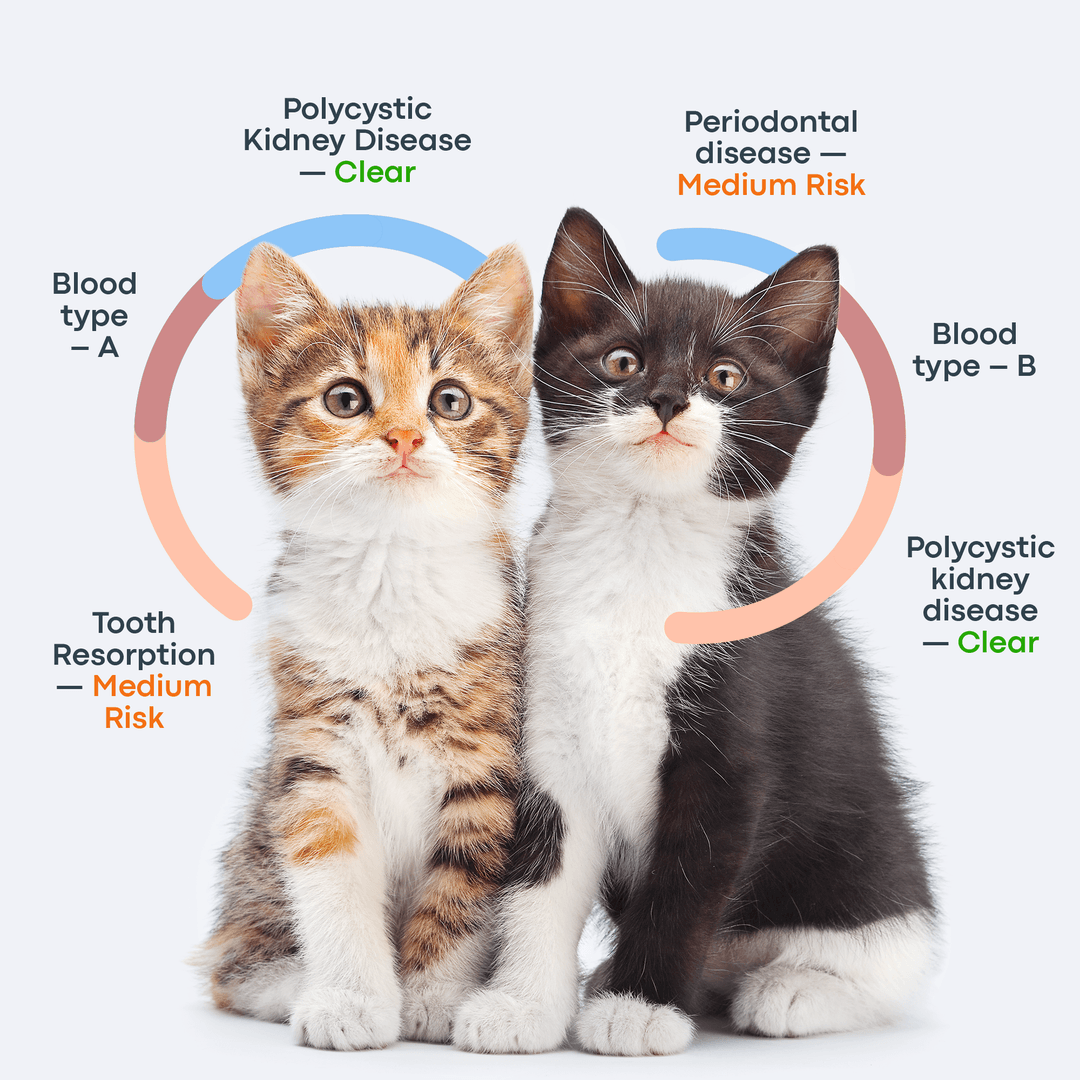Headaches are one of the most common pain complaints in people. Since there are no reliable medical tests to detect a headache directly, we rely on communication to describe the pain, its triggers, and its impact on overall health. Unfortunately, our pets don’t have this ability, which makes detecting such discomfort in them far more challenging.
So, do cats get headaches? The answer is yes—cats can experience headaches. These episodes are often overlooked because the signs are subtle and easy to mistake for normal feline behavior. However, unrecognized headaches may signal underlying problems such as stress, injury, dental disease, high blood pressure, or other medical conditions.
If left untreated, pain in cats can lead to changes in behavior, reduced quality of life, and worsening health over time. That’s why it’s important for cat owners to understand the possible signs of feline headaches, know what might be causing them, and recognize when it’s time to seek veterinary care.

What Exactly Is a Headache in Cats?
According to Dr. Alice Barker, BVSc MRCVS, cats can experience different types of headaches, much like humans do. These are generally classified as either primary or secondary headaches.
Primary headaches are not caused by any underlying disease. Instead, they stem from abnormal brain or nerve activity, chemical imbalances, or sometimes stress. While these headaches can be painful, they are considered benign because they are not linked to another health condition.
Secondary headaches, on the other hand, are symptoms of another problem. They may be triggered by issues such as high blood pressure, infections, dental disease, trauma, or even eye problems. In these cases, the headache is a warning sign of something more serious happening in the body.
Because cats cannot describe their pain, distinguishing between these types of headaches can be difficult. However, understanding the difference helps highlight why it’s important to pay attention to changes in your cat’s behavior and seek veterinary advice if you suspect something is wrong.

Primary Headaches in Cats
Just like people, cats may experience different types of primary headaches—headaches not directly caused by another medical condition. Although research on feline headaches is limited, veterinarians and researchers believe cats can suffer from tension headaches, migraines, and in rare cases, cluster headaches.
Tension headaches
Tension headaches are believed to be among the most common types of headaches in cats. They may not be obvious at first, but they can cause significant discomfort and changes in behavior.
Signs: Cats with a tension headache may appear unusually quiet, squint, avoid bright light, or rest more than usual. They may also become irritable when touched around the head or neck. Subtle changes—such as decreased grooming, reduced playfulness, or hiding—can also point to discomfort.
Causes: Stress is a major contributor. Muscle tension in the head, neck, or shoulders may also play a role. Environmental changes, loud noises, household stress, or even prolonged poor posture during rest could contribute.
Duration: Episodes may last several hours to a full day. If the trigger (such as stress or an uncomfortable environment) persists, the headaches may recur.
Migraines
Although migraines are better studied in humans, researchers have observed migraine-like symptoms in dogs, cats, and other animals, suggesting that cats may indeed experience them.
Signs: A cat experiencing a migraine may squint, avoid light, retreat to quiet or dark spaces, and become less playful. Irritability, reduced appetite, increased vocalization, or reluctance to be handled can also occur.
Causes: Migraines are thought to stem from abnormal brain activity or changes in blood flow. Genetics, stress, and environmental triggers—such as bright lights, loud noises, strong odors, or sudden routine changes—can play a role.
Duration: Episodes may last several hours to a full day. Some cats may experience recurring migraines if the triggers remain present.

Cluster headaches
Cluster headaches are very rare in cats, but they may occur. According to veterinary advisor Dr. Bruce D. Armstrong, these headaches appear in cycles or “clusters,” with multiple painful episodes close together, followed by periods of no headaches.
Signs: During an episode, cats may paw at their head, squint, hide in dark spaces, vocalize more, avoid interaction, or appear restless. Some may also show sensitivity to light or sound, appetite changes, or disrupted grooming habits.
Causes: The exact cause is not well understood. Nerve dysfunction and blood vessel changes are thought to play a role. Stress, strong sensory stimuli, or disruptions in routine may act as triggers.
Duration: Individual attacks can last from 15 minutes to several hours. They may recur several times a day during a “cluster period,” which can last days or weeks. Cats may then go weeks or months without symptoms before another cycle begins.
Secondary Headaches in Cats
Can cats get headaches of the secondary type? Yes. These headaches are caused by an underlying disease or injury rather than developing on their own. In people, secondary headaches may stem from issues such as infections, high blood pressure, or trauma, and similar principles can apply to cats. Some secondary headaches may be relatively mild, while others could indicate a serious health problem that requires veterinary attention.
The International Headache Society developed the International Classification of Headache Disorders (3rd edition, ICHD-3) to categorize human headache types. While this system is not officially applied to cats, veterinarians sometimes draw on it as a framework to better understand headache-like symptoms in animals.
A Word of Caution
Headaches in animals remain poorly studied, and there are no formal classification systems specifically designed for cats. Primary headaches are particularly difficult to detect because they cannot be measured or tested directly—we can only infer their presence through behavior.
That said, growing research suggests that both dogs and cats do experience headaches, often in connection with other medical issues. For example, high blood pressure (hypertension), dental disease, ear infections, or eye problems such as glaucoma may all trigger headache-like pain in cats. Recognizing these possible links is crucial, since treating the underlying condition can relieve the headache and improve overall health.
Anatomy of a Headache

Headaches are generally associated with pain in different regions of the head or neck. Interestingly, the brain itself cannot feel pain because it does not contain pain receptors. Instead, headache pain arises from surrounding structures in the head that do have pain receptors. These include:
The meninges (the three protective membranes covering the brain and spinal cord)
Blood vessels (arteries, large veins, and venous sinuses)
Cranial and spinal nerves
Head and neck muscles
Parts of the eyes, ears, and teeth
Other pain-sensitive tissues of the head
In both people and animals, headaches are most often linked to irritation or traction of the meninges and blood vessels. They may also be triggered by vasodilation (widening of blood vessels), blood vessel spasms, inflammation or infection of the meninges, or muscular tension in the head and neck.
At present, the exact pathophysiology of headaches in cats has not been fully described. In fact, even in humans, scientists still do not completely understand the precise mechanisms that cause headaches. What we do know is that headaches are the result of complex interactions between the nervous system, blood vessels, and pain-sensitive tissues.
What Causes Headaches In Cats?
As cat owners, we often wonder, “Why do cats get headaches?” Headaches in cats can occur due to many different factors, including head trauma, brain diseases (i.e., concussion, encephalitis, tumor), other diseases (i.e, upper respiratory infection), fever, dental problems, allergies, certain foods, dehydration, stress, etc.
Head trauma – This secondary headache can result from an injury that causes pain or swelling in the head/brain.
Dental issues - dental issues such as tooth infections, gum disease, or oral pain can radiate to the head and cause headaches in cats. Left untreated, these problems may worsen discomfort and affect eating, behavior, and overall health.
Hypertension – Cats, too, can suffer from hypertension. This results in high blood pressure, which is an underlying medical condition that can cause secondary headaches.
Respiratory infection – inflammation, sinus pressure, or fever from infection may trigger headaches.
Neurological issues – brain disorders, tumors, or nerve dysfunction can cause secondary headaches.
Stress and environmental triggers – environmental allergens like harsh candles or cleaners, and stress and anxiety, can directly trigger tension or migraine-type primary headaches in cats.
Genetic predisposition – a cat could have an inherent susceptibility to primary headaches, such as migraines or cluster headaches.
How Do You Know if Your Cat Has a Headache?
Because cats can’t tell us when they’re in pain, recognizing headaches relies on observing behavioral, physical, and sensory changes. While these signs don’t confirm a headache on their own, they can point to discomfort and should prompt closer attention—or even a vet visit if they persist.
Behavioral signs
Cats in pain often act differently than usual. If your cat has a headache, you might notice:
Hiding more often or seeking quiet spaces
Aggression or irritability when approached or touched
Reduced appetite or avoiding food altogether
Loss of interest in play or interaction
Unusual tiredness or prolonged sleeping
Biting or scratching when handled, especially if you touch a sensitive area of the head or neck
Physical signs
Certain physical changes can also suggest head pain:
Head pressing – pressing the head against walls, furniture, or the floor, often linked to severe discomfort and requiring urgent veterinary care
Dilated pupils or vomiting during intense episodes
Changes in grooming – some cats neglect their fur, while others overgroom
Litter box changes – avoiding the litter box and urinating/defecating elsewhere (pain or stress can contribute)
Fever or signs of illness
Lethargy and lack of motivation
Breathing changes – shallow or rapid breathing, or an altered pulse rate
Sensory signs
Like humans with migraines, cats may become more sensitive to their surroundings when they have a headache:
Light sensitivity – squinting or avoiding bright areas
Sound sensitivity – reacting strongly to everyday noises
Seeking darkness and quiet – retreating to dim, quiet spaces for relief
How to Treat Cat Migraine?
Now that we’ve answered the question “Can cats get headaches?”, the next step is understanding how they can be treated. Because diagnosing headaches in cats is difficult, treatment can also be challenging.
If you suspect your cat is experiencing headaches, the most important step is to consult a veterinarian. Only a professional can rule out other conditions and identify whether the pain is linked to an underlying health problem.
Secondary headaches (caused by another condition such as trauma, infection, dental disease, glaucoma, or high blood pressure) usually improve once the underlying issue is diagnosed and treated.
Primary headaches are harder to manage since they are not linked to a specific disease. In these cases, treatment is often aimed at reducing pain and minimizing potential triggers.
Managing Primary Headaches
Because pinpointing the cause of a primary headache is challenging, your veterinarian may recommend:
Tracking lifestyle factors – Keep a diary of your cat’s daily habits, diet, stress levels, and environment. This can help identify patterns or triggers (for example, loud noises, bright lights, or sudden changes at home).
Pain management – Vets may prescribe safe feline pain relief or anti-inflammatory medications. Never give your cat human painkillers such as acetaminophen (Tylenol) or ibuprofen, as these are toxic to cats.
Environmental adjustments – Reducing stress at home, offering quiet resting areas, using soft lighting, and keeping a consistent routine may help lower headache frequency.
Supportive care – Ensuring good hydration, a balanced diet, and regular vet check-ups supports overall health and reduces the risk of secondary triggers.
Working With Your Vet
Since every cat is different, your veterinary team will guide you in finding the right combination of treatments and lifestyle adjustments. For some cats, addressing stress and providing a stable environment may be enough; for others, medication may be needed to control recurring pain.
Medications for Treating Feline Headaches
Medications vets may prescribe
Veterinarians may use a variety of medications to manage feline headaches, depending on the underlying cause and severity:
NSAIDs – Used carefully under veterinary supervision to reduce pain and inflammation. Many human NSAIDs are toxic to cats, so never administer these without guidance.
Anti-nausea drugs – Help control vomiting that can accompany severe headache episodes.
Anti-seizure medications – Prescribed if neurological issues are suspected.
Important: Only give medications to your cat under strict veterinary supervision. Many drugs that treat human migraines are unsafe for cats.
Non-drug therapies like acupuncture
Some cats respond well to acupuncture, which may help reduce pain, calm nerve activity, and provide additional relief. This holistic option can be used alongside conventional treatments for the best effect.
Environmental adjustments
Creating a quiet, low-stress environment can help your cat during migraine episodes and prevent future attacks:
Dim lighting and minimal noise
Safe hiding spots for resting
Reducing stressful triggers, such as sudden routine changes
Dietary recommendations
Your veterinarian may also suggest dietary adjustments if food sensitivities or nutritional imbalances are suspected. Consistent meal times and high-quality nutrition can support overall brain and nerve health, potentially reducing headache frequency.
Safety Reminder:
Never attempt to treat your cat’s headache with human painkillers. If your cat shows signs of pain, discomfort, or behavioral changes, always consult a veterinary professional immediately.
How to Prevent Headaches in Cats
The question “Can cats have headaches?” naturally leads to another “How can we prevent them?” While some headaches may be unavoidable, several strategies can reduce the likelihood of your cat experiencing pain:

1. Reduce Stress
Cats are highly sensitive to environmental changes. Keeping their surroundings calm and predictable can help prevent headache triggers. Provide:
Plenty of hiding spots and elevated perches
Regular playtime and mental stimulation
A stable routine with minimal sudden changes
2. Ensure Proper Hydration and Nutrition
Adequate water intake is essential for overall health, including brain function. Feeding wet food alongside dry food can help keep your cat hydrated. Good hydration supports proper circulation, healthy nerve function, and regular digestion, all of which can reduce potential headache triggers.
3. Avoid Toxins and Irritants
Strong odors, chemical fumes, or scented products can irritate your cat’s system and potentially contribute to headaches. Keep items such as scented candles, air fresheners, harsh cleaners, and smoke away from your cat’s environment.
4. Maintain Routine Veterinary Care
Regular checkups are vital to catch potential underlying conditions early—such as dental issues, high blood pressure, or eye problems—that could trigger headaches. Your veterinarian can provide preventative care, monitor your cat’s overall health, and recommend strategies to minimize discomfort.
Conclusion
Do cats get headaches? Yes, they can. However, they cannot tell us when they are in pain and are often experts at hiding discomfort. This makes it easy for subtle symptoms to go unnoticed.
By observing behavioral, physical, and sensory changes, providing a calm and healthy environment, and staying on top of regular veterinary care, you can help reduce your cat’s risk of headaches and improve their overall well-being.
Monitoring tools like Basepaws or other health tracking options can also help you stay proactive about your cat’s health and catch early signs of problems before they become serious.
Frequently Asked Questions
Can cats get headaches like we can?
Yes, cats can get headaches much like humans do. They cannot tell us directly, but their behavior and physical signs often reveal the pain.
Which animals, apart from humans, have headaches?
Apart from humans, animals like cats, dogs, rats, and mice can also experience headaches. Scientists have seen migraine-like signs in these species during studies.
